Visit to Exeter - June 2004
A second visit to Exeter to stay with a Friend who works for the Meteorological Office, recently relocated to Exeter.
Starting from the Cathedral Green (see right), red coated guides will take you on a (free) guided tour of the Town Centre.
This took in the 'Tuckers Hall', a Guild House for the wool trade, with a wood panelled dining room.
There were carvings on the panelling, including a 'Green Man' carving. (see far right)
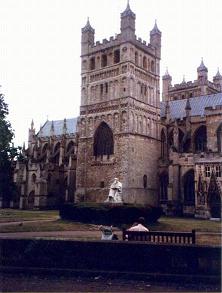
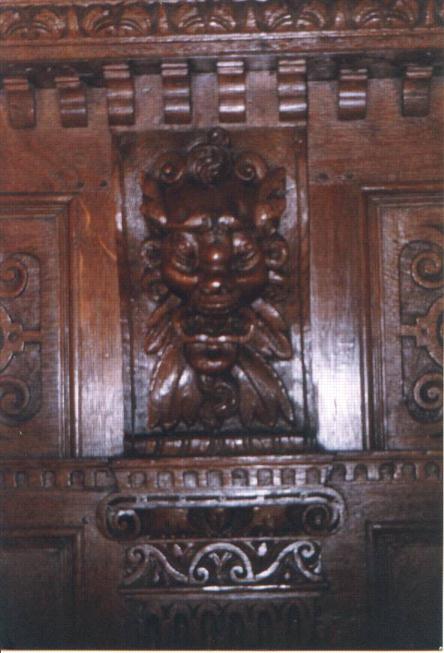
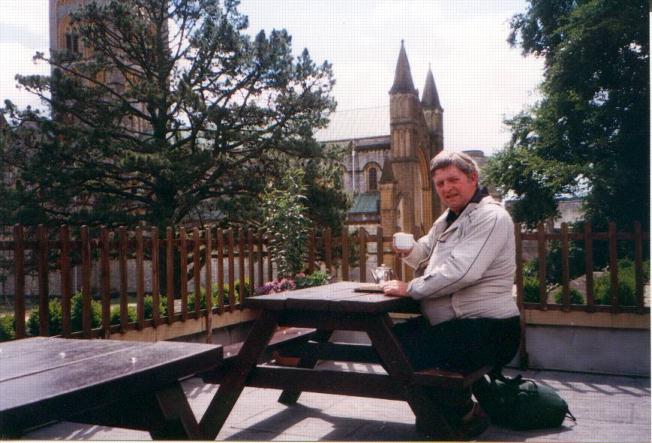
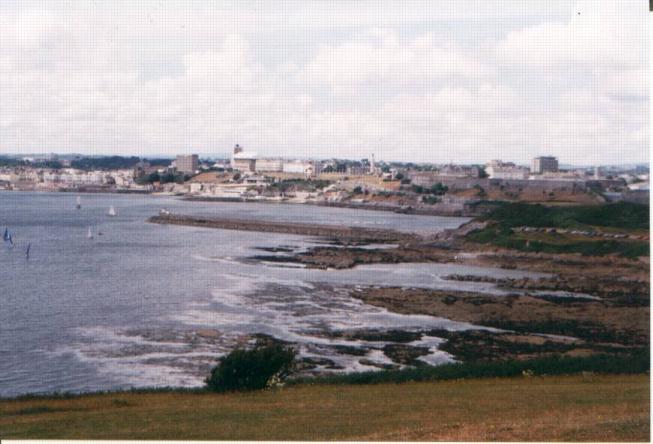
On the Saturday, my Friend hired a car and took me to Plymouth.
On the way there, we visited Buckfast Abbey (see far left). It was a ruin after the Dissolution of the Monasteries, but has been rebuilt since 1907. The monks there sell their produce in a shop near a water mill. The monks, amongst other things, produce lavender oil from a lavender garden.
From there we went on to JennyCliff, with a cheap cafe, and a magnificent view of Plymouth Hoe (see near left).
We took the ferry from a, now converted, RAF Mountbatten, to the Hoe, where we enjoyed ice creams.
On the way back, we visited PlymBridge, a local beauty spot (see right).
A Sign of the Times, since my childhood there. There was litter, a sign saying the water was not up to EC standards, and 'lager louts' spinning their car wheels in the gravel of the car park as they took off.
I learnt to swim at PlymBridge, and I don't believe there was any trouble with the water then!
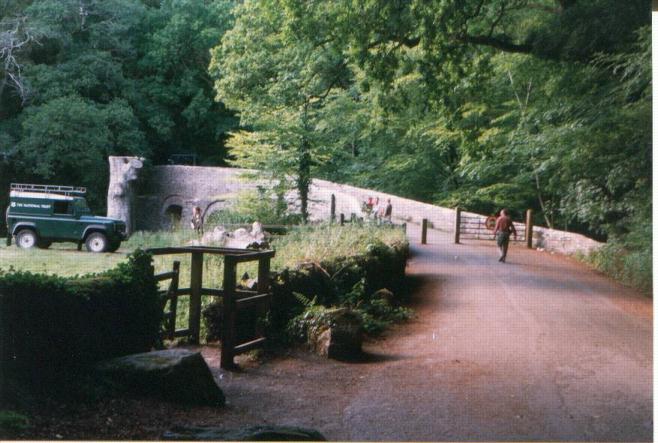
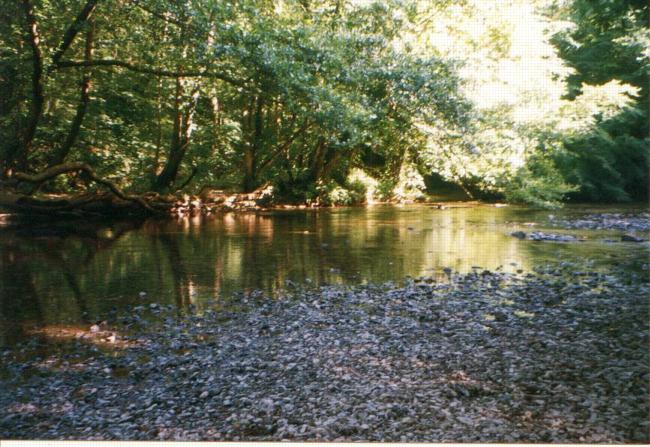
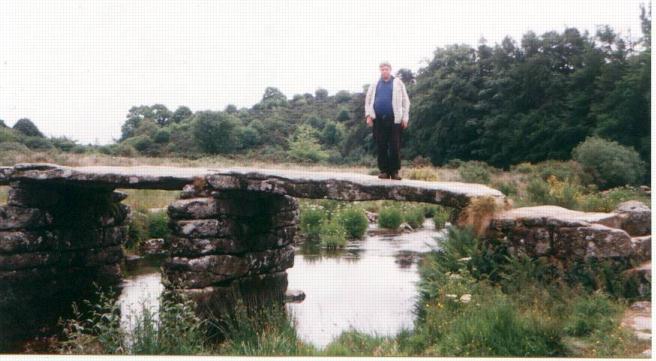
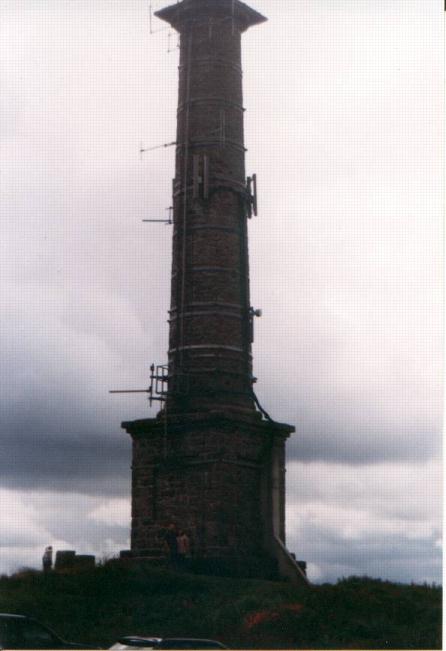
On Sunday, we had Sunday lunch at Callington at the house of a lady friend of my friend's. It is just into Cornwall on the other side of the Tamar.
We travelled there over DartMoor and visited PostBridge, with its famous prehistoric clapper bridge (see far left).
After lunch, we went by car up Kit Hill, nearby, to an ornamental chimney constructed over a tin mine. The local Borough Council, at the time, required that the chimney prove not to be an eyesore.
From Kit Hill, we went on to CoteHele House, down a long narrow lane and having to stop to allow cars to pass in the other direction (see side view near right). A former manastery, now belonging to the National Trust.
There are extensive gardens. I left the others to find a plant we called 'Giant Rhubarb', when we were children. (Actually 'Gunnera'). Just at the last moment, I found it. (see far upper right). The last time I had been there was probably forty years ago!
We just had time to visit the Quay, where the monks shipped wool onto the Tamar (see far lower right), and the Water Mill, where my friend bought a large bag of freshly-ground wholemeal flour.
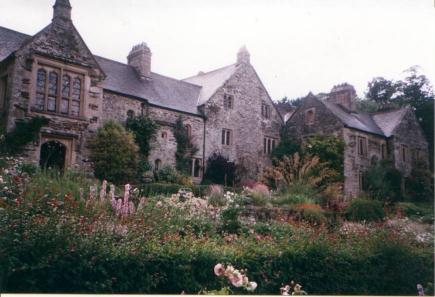
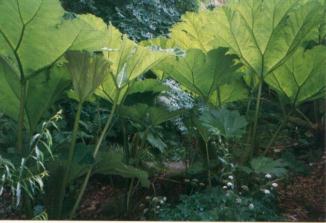
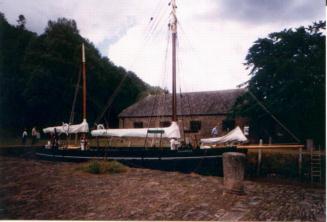
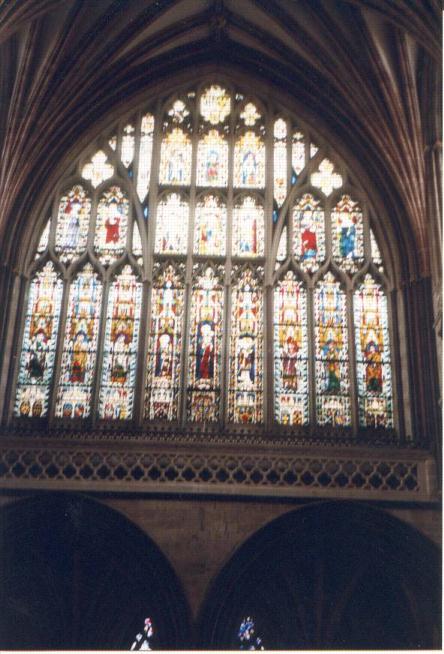
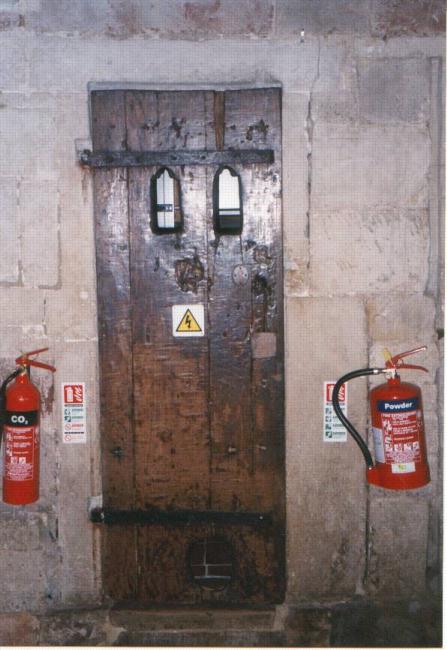
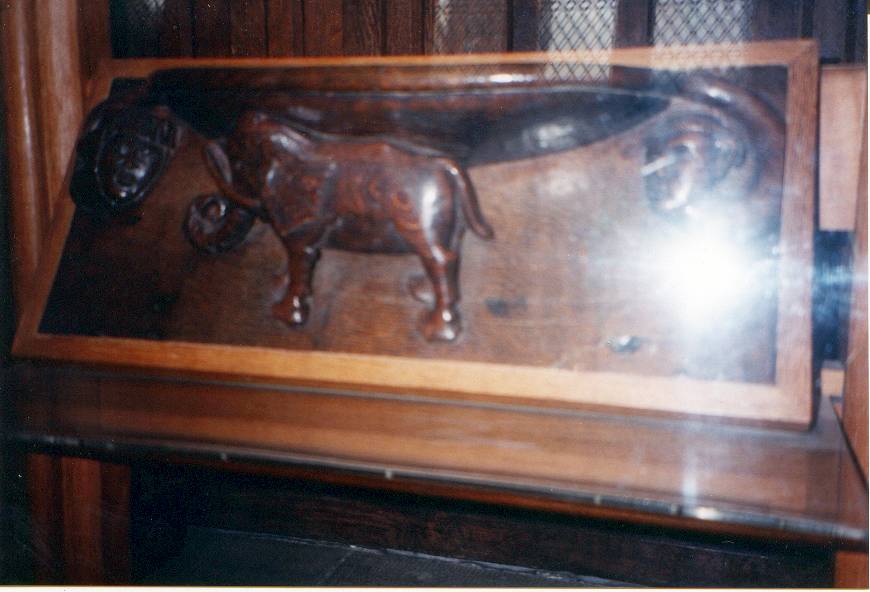
The next day, I returned to Exeter Cathedral to take photographs.
To the left, in order, and firstly, a shot of the West window, the finest example of medieval stained glass in the country (removed for safety in WWII).
Secondly, a door where a circular hole at the base can be made out. This was the home of the Cathedral cat. On May 4th 1942, there was a direct hit by a wartime bomb on a side chapel, which destroyed two flying buttresses. We are told that if another buttress had gone, the whole Cathedral would have collapsed. We are also told that the only casualty was the Cathedral cat, and hence the carving of a cat's face in the restored side chapel's door archway.
Lastly, the medieval carving of an Elephant on a wooden miserichord. Remarkable in the fact that the carver had never seen an Elephant.
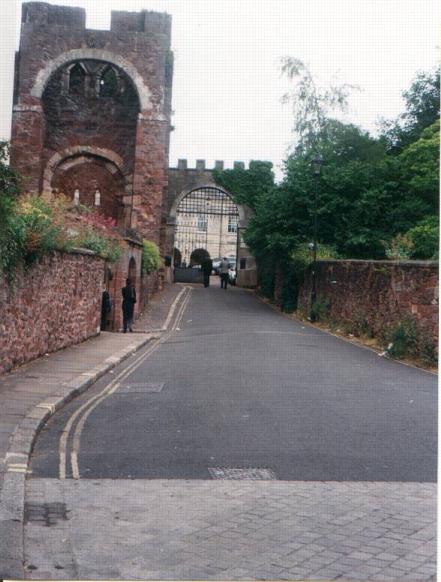
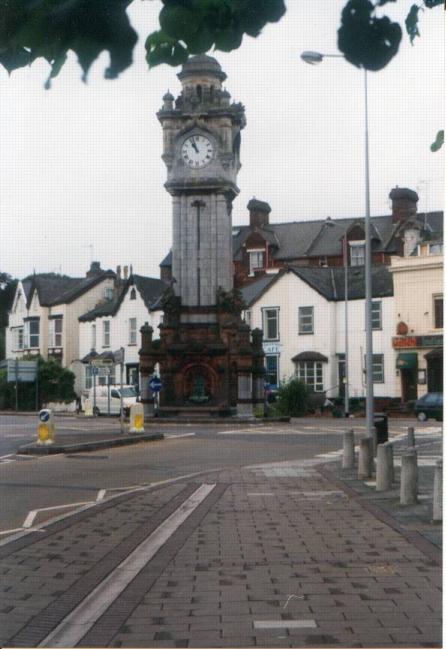
On my last day, I visited RougeMont Castle. (See far left.) Constructed with the local red (volcanic?) stone with which much of oldest parts of Exeter are made.
A plaque nearby states that the gatehouse was built by William the Conqueror soon after 1066 as part of the Norman castle.On the way to St. David's station to catch the train home, I spotted a four-faced clock in the middle of a roundabout. (See near left.)